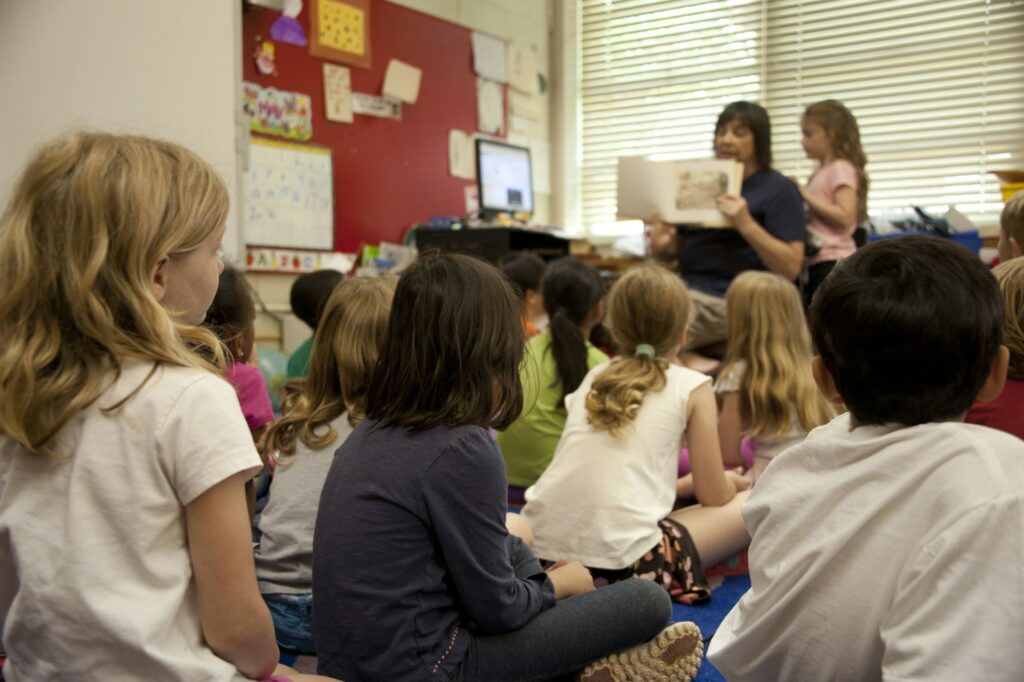A healthy classroom is one where emotional well-being takes center stage. It lays the foundation for scholastic achievement and personal growth. Nurturing emotional wellness helps children build healthy relationships with classmates, family, and friends, benefiting both students and educators.
This article examines the profound impact of emotional wellness on the overall well-being of children. Learn practical strategies to foster emotional health and see how robust wellness initiatives can have a transformative impact on students.
Understanding Emotional Wellness

Emotional wellness encompasses self-awareness, regulation, empathy, and positive connections. It includes the ability to recognize and manage emotions in a healthy way while considering others’ perspectives.
Emotionally balanced students experience greater life satisfaction, resilience, and happiness. They cope better with stress, bounce back faster from setbacks, and exhibit cooperative behavior. Emotional wellness also makes students socially aware and can build healthier peer and teacher relationships.
Studies highlight the importance of emotional wellness. CASEL found that social-emotional learning (SEL) programs increased academic achievement by 11% when focused on five core competencies: self-awareness, self-management, relationship skills, responsible decision-making, and social awareness.
The Role of Teachers in Promoting Emotional Wellness
Emotional well-being plays a crucial role in the classroom. Our teachers stand at the front line, often the first to recognize shifts in a student’s behavior or mood. This unique position enables them to intervene and offer essential support. When educators prioritize emotional health, they nurture an atmosphere conducive to learning, where every student feels understood and valued. Creating a safe and inclusive classroom environment empowers students and fosters mutual respect and emotional well-being. Here are some practical ways to create a supportive environment:
- Provide opportunities for physical activities.
- Integrate SEL into lessons, equipping students with self-awareness, self-management, and social skills.
- Include art, music, and journaling in lessons to help students process their emotions.
- Provide expressive activities to help students communicate better. For instance, designated “calm-down” corners, equipped with stress balls and fidget tools, give students a constructive way to self-regulate.
Benefits of Emotional Wellness Programs
Emotional wellness programs provide structured methods to support students’ mental health needs and cultivate environments conducive to overall well-being. These programs offer a range of benefits.
Improved Mental Health and Academic Success
Schools frequently see substantial benefits after launching emotional wellness programs. Students tend to experience improvements in mental health, academic performance, and social skills. A 2023 study found that SEL programs help students achieve better test scores.
Social Skill Development
Emotional wellness initiatives can significantly improve social skills. Students develop empathy, communication skills, and conflict-resolution expertise. Positive peer relationships become more attainable. Several case studies showcase success stories. Yale’s RULER program has yielded higher engagement, fewer behavioral issues, and better academic results in numerous schools.
These examples demonstrate the upsides of emotional wellness programs in schools. Investing in such initiatives facilitates healthier, more supportive educational environments that benefit students.
Challenges and Solutions
Below are some common challenges with integrating emotional wellness practices in schools along with their potential solutions:
Limited Time and Resources
Teachers have demanding schedules, and planning wellness activities can feel overwhelming. Many schools lack the funds to hire extra staff or provide sufficient training. Including simple wellness activities in academic lessons prevents teachers from becoming overwhelmed. Mindfulness exercises or discussions can become regular class components. Grants and community collaborations can help unlock additional financial resources.
Insufficient Training
Many educators feel ill-equipped to address emotional needs. Conventional training programs often neglect to cultivate these crucial skills. Investing in proper educator training equips teachers to address emotional needs confidently. Workshops also foster vital skill-building.
Stigma and Misunderstanding
Mental health remains stigmatized. Some stakeholders fail to grasp the importance of emotional wellness and may deprioritize it. Educating stakeholders prevents misunderstandings that perpetuate stigma. Clear communication normalizes discussing mental health constructively.
Complex External Factors
Home life and community environments profoundly shape students. Family dynamics, socioeconomics, and other factors may hinder schools’ efforts. Outside organizations can provide funding, volunteers, and experts to supplement school staff. Engaging parents in emotional wellness initiatives can also help bridge the gap.
Burnout
Continuously supporting students emotionally risks burning out staff and may affect their ability to provide effective care. Unified efforts from teachers, parents, and professionals yield comprehensive student support. This can help address students’ individual needs.
Tools and Resources for Emotional Wellness
Nurturing emotional wellness in the classroom requires a range of tools and resources. These invaluable aids empower teachers to cultivate a supportive environment and equip students with the skills to manage their emotions effectively.
Classroom Activities
There are several classroom activities you can do to help children manage their emotions:
- Mindfulness exercises: Integrate deep breathing, meditation, and guided imagery into lessons to help students alleviate stress and sharpen their focus.
- Emotion regulation visuals: Utilize mood meters and emotion wheels, enabling students to identify and express their feelings.
- Calming corners: Designate a classroom space where overwhelmed students can self-regulate and calm down.
Structured Programs
Implementing structured SEL programs provides a comprehensive framework for fostering emotional intelligence, empathy, and conflict-resolution skills:
- Peer mentoring: Facilitate supportive groups where students can share their experiences and learn from one another.
- SEL curriculum: Programs such as Second Step and The Zones of Regulation offer tailored lessons on emotional awareness and management.
Online resources and publications
Numerous online resources, publications, and programs offer invaluable guidance to educators. Here are some:
- CASEL: CASEL provides comprehensive SEL frameworks and educator resources.
- Responsive Classroom: This resource emphasizes safe, joyful learning environments.
- MindUP: This program integrates neuroscience, mindfulness, and positive psychology.
Technology
In our digital age, technology serves as a powerful ally. Several apps and digital tools are available to aid emotion regulation and cultivate a positive classroom climate:
- Headspace for Kids: This app offers guided meditations to help kids relax and focus.
- ClassDojo: This organization offers classroom management with SEL features and learning activities.
- Smiling Mind and GoNoodle: These mindfulness programs and movement videos promote emotional awareness.
By harnessing these tools and resources, students can flourish academically and personally. Integrating these elements into the classroom cultivates emotional intelligence and fosters an inclusive, supportive educational experience.
Take Action for a Healthier Classroom
Emotional wellness forms the bedrock of an environment conducive to learning. Nurturing this crucial element unlocks vast potential. Students flourish academically and socially when they feel safe, understood, and empowered to manage their emotions effectively.
Prioritizing emotional wellness initiatives in your classroom is a win-win. Not only will students reap immense benefits, but you’ll witness a remarkable transformation. Visit Crème de la Crème to learn more about our nurturing programs.
people sitting on chair inside room by CDC is licensed with Unsplash License
